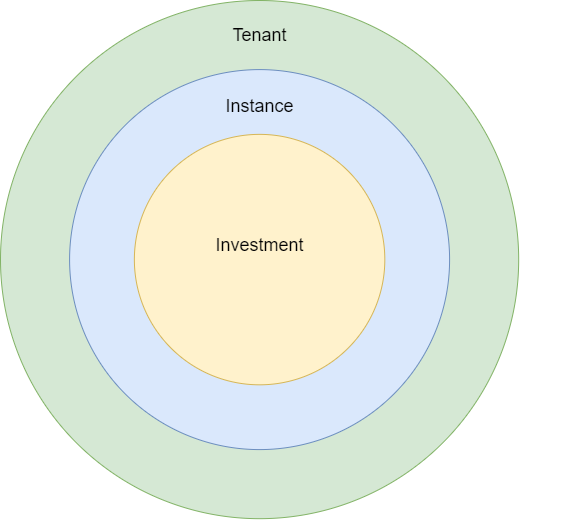Object Hierarchy for K-1 Aggregator
In this guide, we will walk through the basic structure of objects present in K-1 Aggregator, common keywords and phrases used to describe them, as well as how they relate to one another.

Figure 1
Tenants
While these objects are not something you can directly modify or edit via our API, they are our starting point and top-most layer. They serve as the outer-most container and are the first thing your token is associated to. Your API token permits you access to anything under the Tenant umbrella.
Instances
The next layer down is instances. Instances belong to Tenants, and they are also tax year specific. The primary purpose of the Instance is to be a container for all of the investments for that year for a particular taxable entity. Unlike the Tenant, we provide a way to create instances via our API.
Investments
The final layer of our diagram is the Investment. Belonging to an instance, these represent the investments, or K-1s for a particular taxable entity. It's within these investments that we store all sorts of information related to a Federal K-1. Investments can be classified as any major Federal K-1 form types (e.g., 1065, 1120S, 1041, etc.) and provide access to data points according to their type. One of the major pieces of functionality that our API provides is all of the data related to this investment bundled into a neat JSON structure we call the Digital K-1.
Updated 3 months ago
